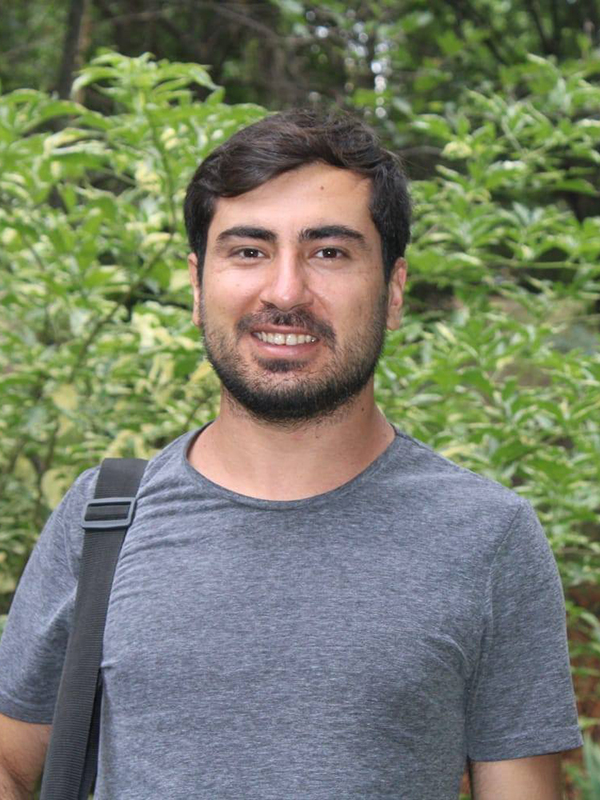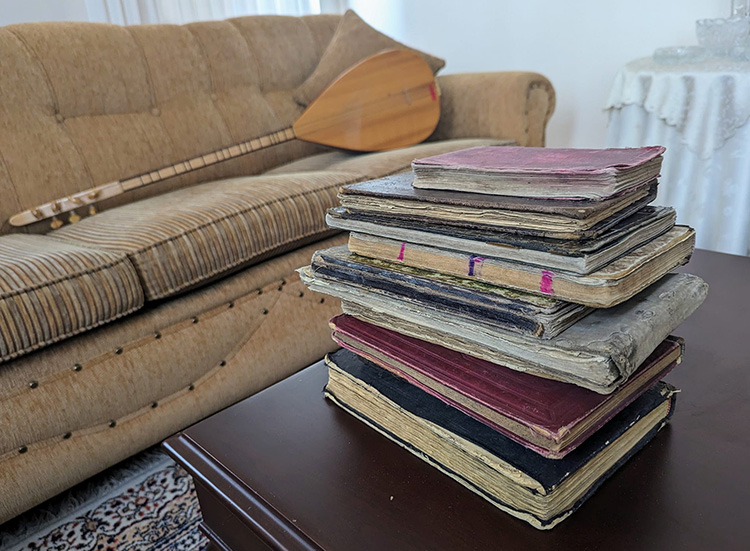
Özkan Karabulut, Harvard Üniversitesi Tarih ve Orta Doğu Çalışmaları programında doktora adayıdır. Lisans derecesini Orta Doğu Teknik Üniversitesi Tarih Bölümü’nden, yüksek lisans derecesini ise Sabancı Üniversitesi Tarih Bölümü’nden almıştır.
Araştırmaları on sekizinci ve on dokuzuncu yüzyıllarda Kızılbaş-Alevi ve Bektaşi topluluklarının okuma ve yazma pratiklerine odaklanmaktadır. Doktora tezi, Alevi dini bilgisinin Cönk olarak bilinen dikdörtgen defterlere yazılmış Alevi tasavvuf şiirleri aracılığıyla aktarımını incelemektedir. ANAMED’deki araştırması süresince, tez çalışması için el yazması bulunduran çeşitli kütüphanelerde ve özel arşivlerde araştırma yapacaktır.
The 2023–2024 ANAMED fellowship provided me with the essential time and resources to conduct extensive archival and field research in Türkiye for my dissertation project. My dissertation focuses on the scripturalization of mystical poetry within the Alevi community, the second largest religious community in Türkiye. For Alevis, mystical poetry has been the most effective medium for transmitting religious knowledge since the emergence of the Kizilbash-Alevi confession under the spiritual leadership of the Safavid household at the beginning of the sixteenth century. Starting from the sixteenth century, but mainly in the eighteenth and nineteenth centuries, Kizilbash-Alevi poetry underwent significant transformation as it began to be recorded in oblong codices called cönk. Through an in-depth analysis of cönk manuscripts, I aim to investigate the motivations behind the writing process of Alevi mystical poetry and its impacts on the beliefs and practices of the community. My research delves into the period between the demise of the Safavids in 1736 and the closure of dervish convents in 1925 by the Turkish Republic, offering insights into Alevi religiosity within the context of social, political, and economic transformations during the eighteenth and nineteenth centuries.
The primary source base for my dissertation is the Alevi mystical poetry recorded in cönk manuscripts and appended in the back pages of Buyruk (lit. “Command”) manuscripts, which contain authoritative accounts of basic Kizilbash-Alevi beliefs and rituals. I comparatively examine sources from three main regions that have hosted considerable Alevi communities. The first is the Sivas-Erzincan region, which boasts a diverse population of Turkish, Kurdish, and Zaza-speaking Alevis. The second is the Amasya-Çorum region, historically a center for many Alevi poets. Lastly, central Anatolia, especially the Kırşehir region, is home to the central convent of the Bektashi order. Sources from these regions are primarily preserved in several key locations. These include the National Library in Ankara, the Süleymaniye and Atatürk Libraries in Istanbul, various local manuscript libraries in Anatolian and European cities, and the private archives of Alevi dede (spiritual guide) families.
 Fig. 1. A cönk manuscript from the National Library, Ankara.
Fig. 1. A cönk manuscript from the National Library, Ankara.
My research journey started last year with a thorough examination of cönk manuscripts at the National Library in Ankara and local manuscript libraries in Sivas and Konya. Concurrently, I delved into eighteenth-century chronicles to trace Ottoman policies toward Kizilbash-Alevis. During my ANAMED fellowship, I have conducted archival and field research across eight different cities in Türkiye, continued analyzing collected manuscripts, reviewed literature, and refining my preliminary findings in Istanbul.
The first leg of my fieldwork spanned 17 days in central and southeastern Anatolia during the first three weeks of October and encompassed Amasya, Sivas, Adıyaman, and Kahramanmaraş. This research allowed me to uncover 11 distinct poetry notebooks previously undocumented in scholarly literature. Most of these manuscripts were produced in the nineteenth century. These sources offer crucial insights into the internal communal dynamics of the Alevi community and shed light on their social and literary history during the nineteenth century. Additionally, I identified numerous printed texts and manuscripts in private Alevi collections in these regions, which enriches our understanding of Alevi book culture.
The second fieldwork phase in November and December included two trips to Erzincan. I discovered two Alevi family archives, one of which contains three poetry notebooks. Accessing sources from Zaza- and Kurdish-speaking Alevis expanded my research scope and highlighted shared religious and literary traditions across Alevi communities speaking different languages.
Through multiple field trips and archival research, I have developed my thesis in two main aspects. Firstly, the plethora of sources in Alevi villages enriches my arguments and facilitates a study of Alevi reading and writing practices within the broader framework of Ottoman book history. Secondly, the discovery of numerous nineteenth-century poetry notebooks prompts a reconsideration of my dissertation’s chronological boundaries and allows for a nuanced understanding of Alevi poetry circulation between regions during the nineteenth century.
During my fellowship tenure, I presented my findings in two conferences and authored an article based on my research, accepted for publication in an upcoming edited book. This article challenges existing methodological approaches in cönk studies and endeavors to define an Alevi cönk. The spring term of the fellowship was dedicated to writing my first dissertation chapter and working on the collected manuscripts. Additionally, I plan two additional trips to southern Türkiye and the Balkans for preliminary field studies. While this study does not directly contribute to my dissertation, it will provide sources for a more macro-level exploration of the formation of the poetry tradition among Alevi communities across the wider Ottoman geography.

Fig. 2. Private library of an Alevi dede family (photo by Özkan Karabulut).

